The initial step toward becoming an outstanding dart frog owner is to gather the right information. And the first and foremost information you should acquire is about the food habits and diet of your frog. Surprisingly, the dart frog in captivity has a much smaller and unique diet compared to the wild one. This makes things a little harder for you as you need to figure out what do dart frogs eat when they’re in captivity.
The main food of the dart frog is insects as they are insectivorous animals. Small insects are their staple & favorite food. So when you put dart frogs in a terrarium, give them lots of insect to eat, they’ll love it.
In this article, I will take you on a long tour to give you a precise idea of what dart frogs eat. You will also get a deep idea about the feeding schedule of the dart frog.
What can you feed to your dart frog?
The first thing when you want to consider dart frog food is the size. They can’t consume more than ⅛’’ insects. I know it’s a massive pain to size up what these frogs can and can’t eat. To help you with it, I’ll provide you with a series of food for them.
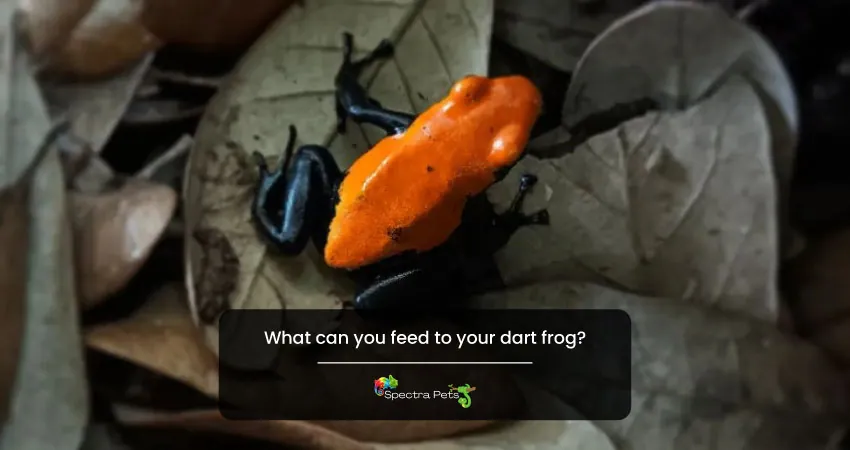
In the following part, you will see the various insects they love to eat….
Worms
Worms would be always a top-notch food for most of the frog species and that includes the dart frog too. They are full of nutrients which is excellent for the poison dart frog’s health.
You can keep different worms like repti worms, mealworms, calci worms, and phoenix worms in your dart frogs menu.
For the best health of the frog, you can keep the phoenix worms regular as they don’t require any supplement dusting due to their high calcium & phosphorus level. Mealworms would be also a nutrient & vitamin booster food for the frog.
Fruit Flies
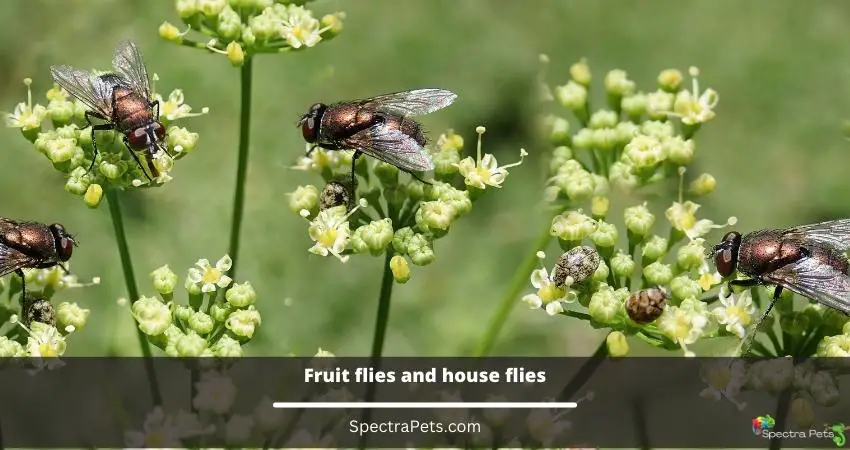
You can fix these flies as the staple food of the dart frog. In terms of culturing, these are really easy. These little insects are full of beneficial things like iron, magnesium, and calcium.
There are 2 types of fruit flies called Hydei fruit flies and Melanogaster fruit flies. Melanogaster fruit flies have a size of about 1/16’’ in length and are suitable for feeding both juvenile and adult poison dart frogs. These flies are mini protein houses which is great for the frog.
Compare to the melanogaster, you will see the hydei fruit flies are a bit large in size. As a result, they carry more protein.
Springtails
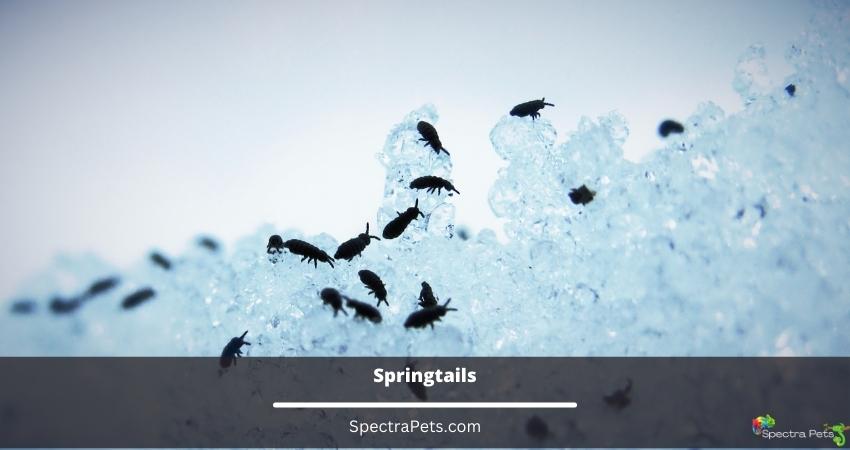
Culturing springtails is comparatively easier. All you need is a container where charcoal and rice are mixed. They will easily form and breed a lot of springtails. You can easily get them out of the charcoal by adding a bit of water and they will start to float.
These little arthropods can be an excellent snack but definitely not the main meal of your dart frog. Because these are not packed with multiple vital nutrients.
Isopods
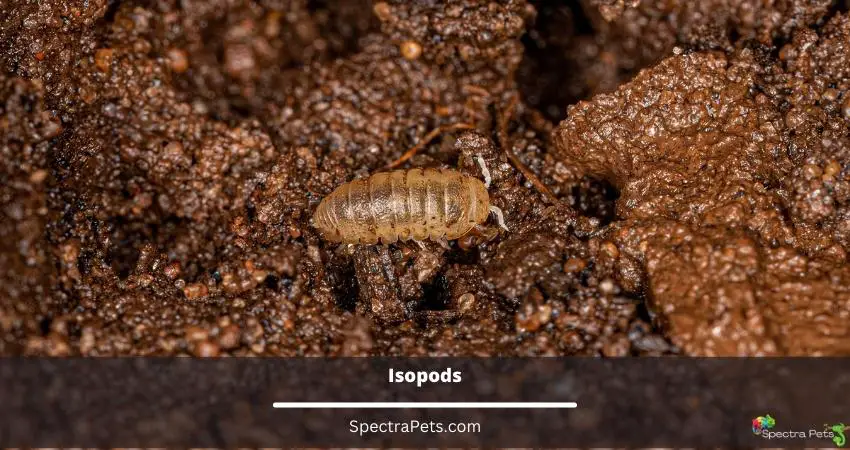
These tiny little creatures would be a good addition to the poison dart frog’s diet. You can keep this species as your dart frog’s occasional snack. The maximum size they can become is 0.8’’. Moreover, due to their small size and soft body, dart frogs can easily consume them. You can easily culture isopods as they reproduce really fast.
Bean beetles
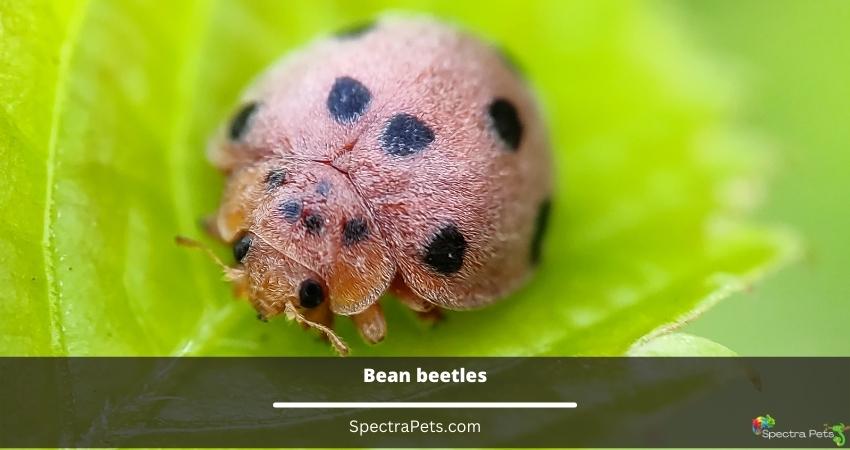
These bugs are easy to culture and very cheap food while providing outstanding health benefits for your lovely frog.
These guys are loaded with protein, vitamin A, iron, calcium, etc.
Crickets
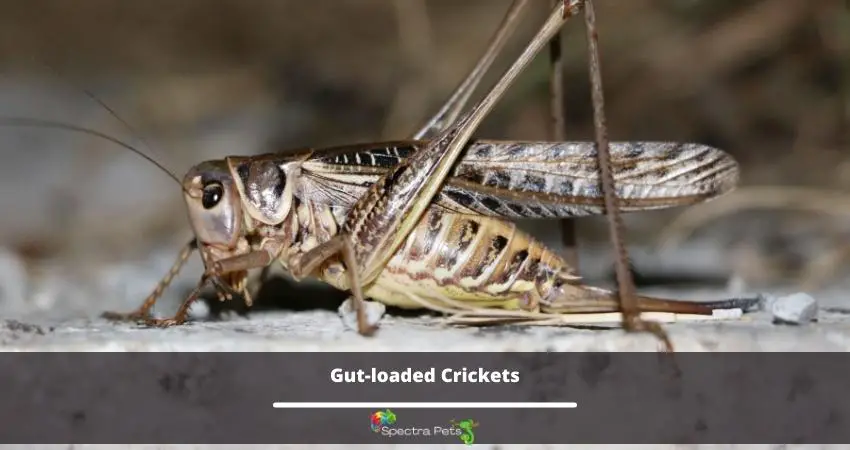
Although crickets are a big hassle when it comes to culture. However, you can easily find them at any online pet store. Due to their hard exoskeletons, you have to ensure that you are providing a specific type of cricket name pinhead cricket.
These are packed with nutritional value, small in size, and safe for your poison dart frogs.
The food you need to avoid feeding the dart frog
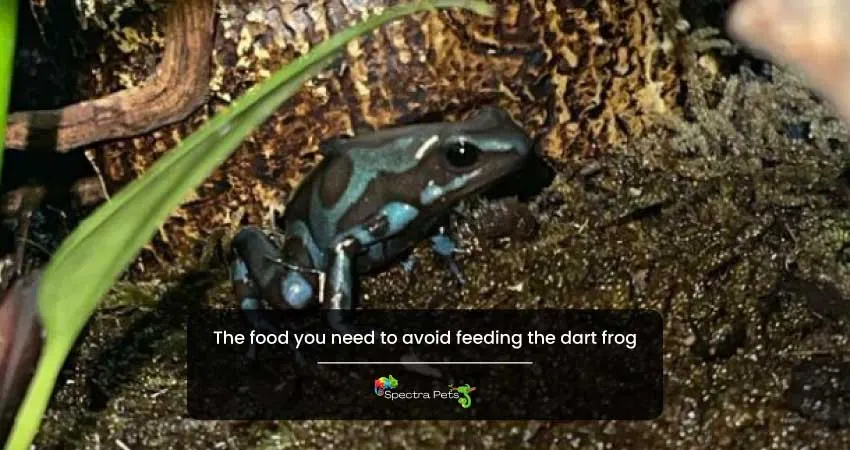
A dart frog’s food list is very different from other amphibian species. They sometimes consume food in captivity which is not on their eating list in wild.
Some food that is appealing to most frog species might not be good & suitable for your dart frogs. So let’s take a deep look…
In captivity, it’s a big no-no to feed insects that were collected in front of the forest or close to agricultural land. Because it might have pesticides or parasites which can seriously harm your frog’s health.
Dart frog swallows their prey and they don’t have any teeth. So you should not provide any insects that are larger than the frog’s size. An appropriate measurement is not to feed them food that’s more than ⅛’’ in size.
Commercial food online is marketed heavily and often unsafe for the frog’s health. Try to provide the natural one that was cultured by you or a known local insect breeder.
How much can you feed the poison dart frog?
As long as you don’t know the required food amount of your dart frog, the risk of overfeeding and underfeeding remains.
How you are going to feed your frog the feed will depend on age & size, types of feeders, and live insects size.
Let’s take a quick look at the feeding schedule bellow for both adult and juvenile dart frogs…
Adult dart frog feeding Frequency
| Food/ Live insects | Frequency of feeding |
| Springtail | 2-3 days per week |
| 50-70 Hydei Fruit Flies | 4-5 times per week |
| Wax Worms | 1 piece per month |
| Phoenix worms | 1 piece per month |
| Rice flour bettle | 1 piece per month |
| Pinhead cricket (5-10 weeks) | 1 piece per week |
| 25-50 Melanogaster fruit flies | 2-3 times per week |
Juvenile dart frog feeding Frequency
| Food/ Live insects | Frequency of feeding |
| Phoenix/Wax Worms | 1 piece per month |
| Isopods | 4-5 days per week |
| Springtails | 4-5 days per week |
| 20-30 Melanogaster fruit flies | Per day |
| Pinhead cricket ( 5-10 weeks) | 3 times weekly |
| 25-30 Hydei fruit flies | Per day |
| Rice flour beetle larvae | 1 time monthly |
Here, I tried to give you an approximate idea of the dart frogs food. You have to remember that it can go ups and down in both adult & juvenile frogs.
Monitor if there’s any leftover food, if it’s then simply reduce the food amount. On the opposite, if you notice the frog eating like crazy and fast then increase the overall food amount.
What Do Dart Frogs Eat In the Wild Forest?
You may want to know how different food the dart frog enjoys back in the wild. As a first step, we can divide the diet for tadpole and adults separately.
In the wild, the mommy dart frog feeds the unfertilized eggs to her tadpoles. Which works as an awesome protein booster.
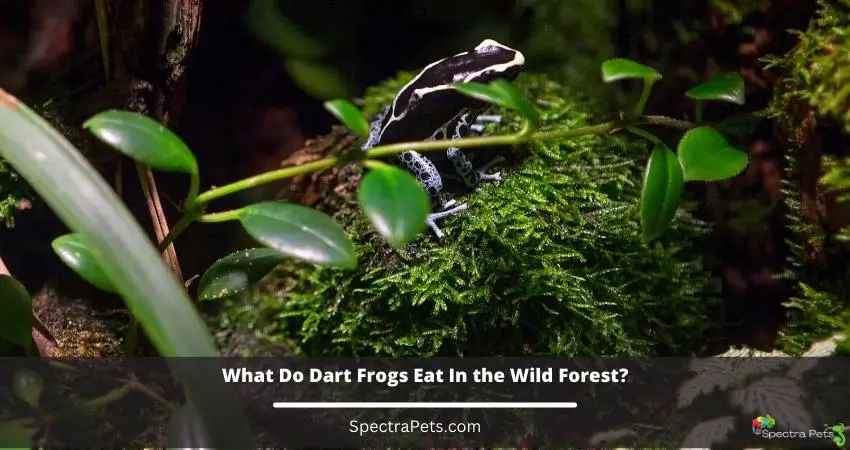
In their tadpole stage, the poison dart frog consumes lots of algae. When they slowly start to grow into baby dart frogs, they eat small insects along with the algae.
An adult poison dart frog has a very unique diet compared to the baby one. These aggressive eaters hunt 12-15 prey per hour using the ultra sticky tongue, which includes insects and also the eggs of insects.
Moreover, these colorful frogs love eating mites, beetles, different types of flies, ants, and millipedes.
Checkout the more in-depth article about dart frogs diet in the rainforest.
Which food makes the dart frogs highly poisonous frog?
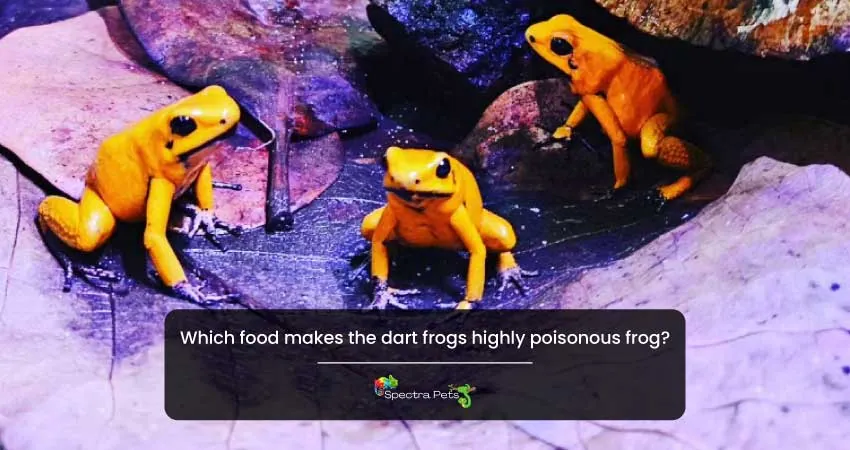
Due to their exogenous nature, they don’t have the ability to produce toxins. They gather and store the toxins from the food they consume.
In wild, poison dart frogs eat spiders, various arthropod species, and many insects. Whatever insects this beautiful creature eats either they have a toxic presence in their body. Or they get the poison while eating the poisonous plants of the deep forest.
A wild dart frog is so dangerous that it can kill 10 humans within a short period of time with its poison. These pretty-looking amphibians rank among the highest poisonous living animal on the entire earth.
However, in captivity, dart frogs are much safer since they don’t contain poison inside their bodies. I have a detailed article on are dart frogs poisonous and whether they are harmful for us. You can give it a read.
How long can dart frog can go without food?
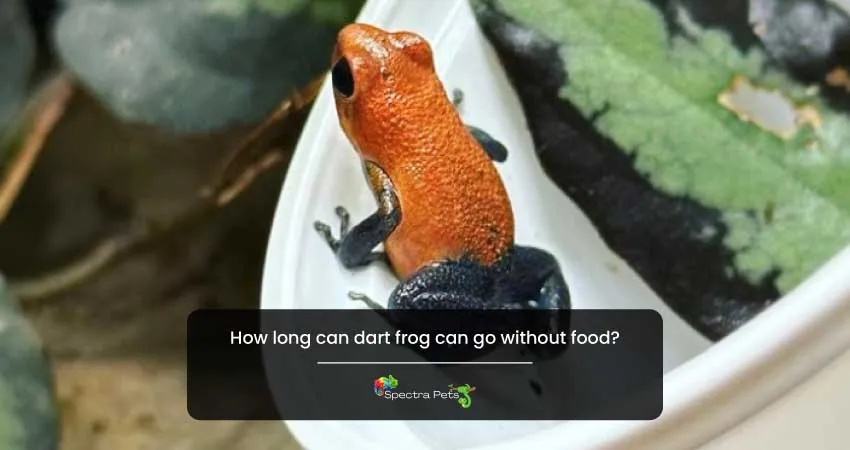
If you are a travel lover and pet hobbyist then there’s no way to escape without knowing how long your poison dart frog can survive without any food.
In general, these tiny bright-colored frogs can survive up to 3-4 weeks without eating a single insect or larvae.
Do dart frogs need supplements with food?
It’s almost impossible for anyone to provide a dart frog with a lot of vitamins and nutrients in captivity. Because you can’t get such variations of insects like their original living zone.
Provide them the following things to maintain your dart frog’s optimum health…
- Calcium
- Vitamin D3
- Vitamin B12
- Vitamin B6
- Vitamin A
- Thiamine
- Niacin
- Biotin
- Riboflavin
- Folic acid
- Ascorbic acid
Just by adding the supplement like calcium and vitamins, you can help the frog to a great extent.
Frequently Asked Questions
1. Do poison dart frogs eat dead insects?
They don’t have any history of eating dead insects in the wild and you won’t see them eating dead insects in the enclosure too. If you provide alive insects only then they will hunt them and eat.
2. Do poison dart frogs eat plants?
They do eat plants but only in the tadpoles stage. Their staple food for the tadpole phase is algae. As soon as they heat adulthood the dart frog becomes 100% insectivorous.
3. Do dart frogs eat snails?
Dart frog loves anything that has a lot of meat and snails are the perfect meal for them. However, they will eat the tiny size snails, not the big ones.
Final words
Until now you got a huge exposure to the dart frog’s diet. If you are a beginner, this information will be highly beneficial for your frog petting life.
Being a dart frog owner you came here & read the post which means you are a genuine dart frog lovers who deserves to be the owner of many frogs.
